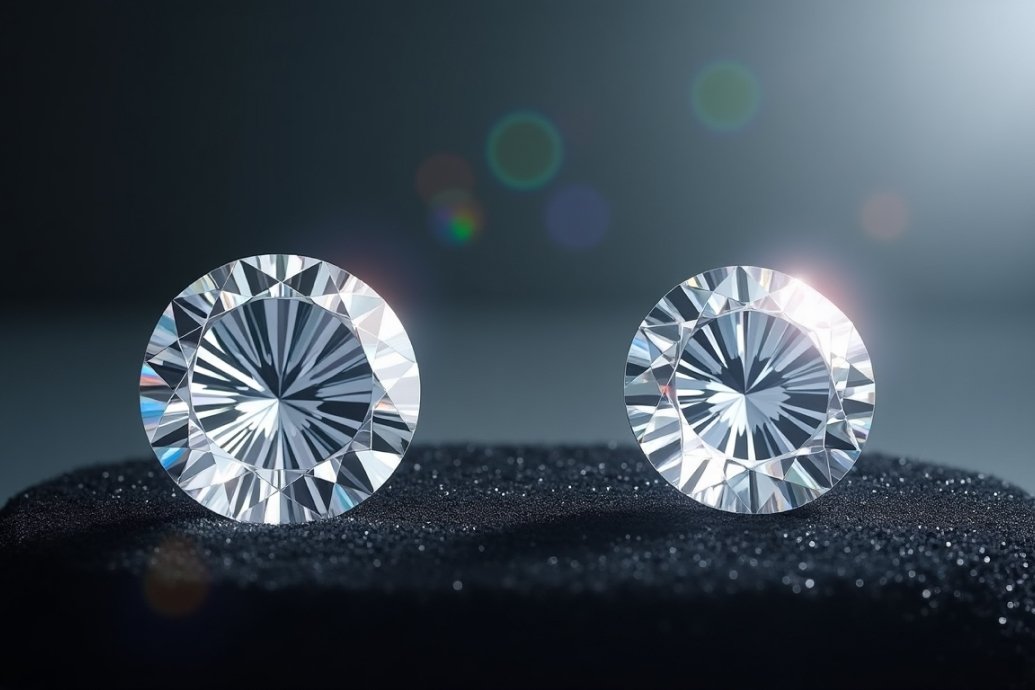Lab-grown diamonds cost 30-50% less than natural diamonds, yet jewellers rarely discuss this most important price difference with their customers. Natural diamonds need millions of years to form deep within the Earth. Modern laboratory processes can now create similar diamonds in just a few months.
These diamonds grown in the laboratory are chemically, physically, and optically identical to natural diamonds. They exhibit the same hardness, brilliance, and fire. The Federal Trade Commission has been acknowledging lab-grown diamonds as real diamonds since 2018. Most jewellery shops still confuse people on this issue.
Understanding Lab Grown vs Natural Diamonds: The Basics
People often ask us What exactly are lab-grown diamonds? These are real diamonds that scientists create in controlled laboratory environments. The process takes just 6-10 weeks, unlike natural diamonds that need millions of years to form deep within Earth’s mantle.
Lab-grown and natural diamonds have the same crystalline structure when we examine their chemical and physical properties. These gems share several characteristics
- Score 10 on the Mohs scale of hardness
- Share the same thermal conductivity
- Show similar optical properties and brilliance
- Contains pure carbon in crystalline form
Scientists have become skilled at creating these remarkable gems using two main methods. The first method, High-Pressure High Temperature (HPHT), mimics how natural diamonds form. This process needs temperatures between 1,300°C and 1,600°C and pressures up to 59,200 atmospheres. The second method, Chemical Vapor Deposition (CVD), works at lower temperatures of 800°C to 900°C.
HPHT uses a diamond seed placed with carbon powder inside a chamber that experiences extreme conditions. CVD takes a different path and uses ionised methane gas in a reactor chamber where carbon atoms settle onto diamond seeds. Scientists monitor both processes carefully to ensure perfect crystal growth.
Technology has advanced so much that you can’t see the difference between lab-grown and natural diamonds by looking at them. Only trained gemologists can spot subtle differences in growth patterns using specialised equipment.
The Real Price Difference: A Complete Cost Breakdown
Let’s take a closer look at the numbers that really matter. Our analysis of current market data shows that lab-grown diamonds cost 80-95% less than natural diamonds. To cite an instance, a 2-carat excellent cut E colour VS2 clarity diamond costs around $30,000 for natural, but only $1,750 for lab-grown.
Current market prices and trends
The lab-grown diamond market has grown by a lot, with global sales reaching $12 billion in 2022. On top of that, prices keep falling, and lab diamonds showed a 12.80% decrease in the last year.
Hidden costs jewelers don’t mention
Most jewellers won’t tell you these facts about natural diamond pricing:
- Traditional retailers apply markups of 100-200% on natural diamonds.
- Natural diamond prices follow the Rapaport List – an international measure updated weekly.
- Lab-grown diamonds lack standardized pricing, which leads to big variations between retailers.
Long-term value comparison
Notwithstanding that, we must address the elephant in the room – resale value. Natural diamonds typically keep about 50% of their original value. Lab-grown diamonds tell a different story – they currently have minimal resale value.
The lab-grown diamond market remains relatively new, and prices keep changing. Lab diamonds now sell for about 10% of natural diamond prices. Just a year ago, they cost 20-30% of natural diamond prices.
Smart buyers should note that a natural 2-carat round-cut diamond with high-quality colour and clarity costs about $13,000-14,000. An equivalent lab-grown diamond sells for about $1,000.
Quality and Certification: Separating Fact from Fiction
Let’s understand how quality standards work for both types of diamonds. The Gemological Institute of America (GIA) and International Gemological Institute (IGI) grade lab-grown diamonds using similar standards as natural diamonds. These organizations review diamonds based on the traditional 4Cs: cut, colour, clarity, and carat weight.
Grading standards for both types
Lab-grown diamonds go through the same rigorous grading process as natural ones. GIA and IGI laser inscribe a unique number on the diamond’s girdle that you can see under 50x magnification. This number matches the certification details and ensures authenticity and traceability.
Myth vs. Reality: The Truth Revealed
Quality differences often create myths in people’s minds. Lab diamonds can reach the same quality levels as natural ones – they even develop similar inclusions during formation. Grading standards create confusion too. Both types get grades from FL (Flawless) to I3 (Included) for clarity and D to Z for colour.
How to read certification reports
A certification report contains these key elements:
- Unique report number and date of examination
- Diamond measurements and proportions
- Clarity and color grades
- Cut quality assessment
- Plot diagram showing inclusions
- Security features for authentication
GIA now provides detailed grading reports for lab-grown diamonds and has removed the term “synthetic” from their certificates. These detailed reports help ensure transparency and let you compare different diamonds accurately.
Making the Smart Choice: A Buyer’s Decision Guide
We want to give you significant insights that will help you make an informed choice between natural and lab-grown diamonds.
Key factors to think over before purchasing
You should ensure your diamond comes with certification from reputable organizations like GIA or IGI. These certificates verify the diamond’s authenticity and quality grades. The lab-grown diamonds receive the same grading standards as natural ones for cut, clarity, colour, and carat weight.
Red flags to watch out for
Our experience as jewelers has taught us several warning signs that protect your investment:
- Lack of proper certification or unclear documentation
- Inconsistent or constantly dropping prices
- Refusal to show the actual diamond under magnification
- Warranties shorter than 10 years
- Pressure to buy right away
Questions to ask your jewellers
These questions will help you make a smart purchase:
- Can you provide a GIA or IGI certification?
- What is the diamond’s origin and growing process?
- What warranties and guarantees come with the purchase?
- How does the quality compare to natural diamonds?
- What maintenance will the diamond require?
The choice between lab-grown and natural diamonds isn’t one-size-fits-all. Your decision should arrange with what matters most to you – budget, environmental impact, or long-term value. Lab-grown diamonds cost 30-50% less than natural diamonds, which makes them an attractive choice for many buyers.
Conclusion
Lab-grown diamonds and natural diamonds share the same physical and chemical properties, but their prices differ by a lot. Our complete analysis shows that lab-grown diamonds provide similar beauty and quality at a much lower cost.
Natural diamonds take millions of years to form, which adds to their mystique. Lab-grown diamonds give budget-conscious buyers a practical alternative. Both types come with proper certification and grading from respected institutions like GIA and IGI. These certifications ensure your investment meets quality standards that are decades old.
Your choice between natural and lab-grown diamonds should align with your personal values and priorities. Some buyers value tradition and long-term worth more. Others want to get the best possible diamond within their budget. Both choices work well – the perfect diamond should match your needs and priorities.
The knowledge in this piece will help you choose your diamond confidently. Make sure to get proper certification. Ask specific questions about origin and quality. Work with honest jewellers who value transparency and help educate their customers.
FAQs
Q1. How do lab-grown diamonds compare to natural diamonds in terms of cost in 2024?
Lab-grown diamonds are significantly more affordable, typically costing 80-95% less than natural diamonds. For example, a 1-carat lab-grown diamond averages around $1,000, while a natural diamond of similar quality could cost between $4,000 and $5,300.
Q2. What are the main differences between lab-grown and natural diamonds? Lab-grown and natural diamonds are chemically, physically, and optically identical. The key differences lie in their origin, price, and long-term value. Lab-grown diamonds are created in weeks, while natural diamonds form over millions of years. Natural diamonds generally retain more value over time.
Q3. Are there any quality differences between lab-grown and natural diamonds? There are no significant quality differences between lab-grown and natural diamonds. Both types are graded using the same standards (4Cs: cut, color, clarity, and carat) by reputable organizations like GIA and IGI. They can achieve the same levels of quality and develop similar inclusions during formation.
Q4. What should I consider when choosing between a lab-grown and natural diamond? Consider factors such as budget, environmental concerns, and long-term value. Ensure the diamond comes with proper certification from reputable organizations. Ask about the diamond’s origin, growing process, warranties, and maintenance requirements. Your choice should align with your personal priorities and values.
Q5. How has the diamond market changed in recent years? The diamond market has seen significant changes, particularly with the rise of lab-grown diamonds. Prices for lab-grown diamonds have been declining, with a 12.80% decrease over the past year. The natural diamond market has also experienced price fluctuations, with some reports indicating a significant drop in prices for mined diamonds in recent years.



